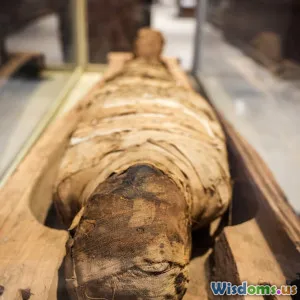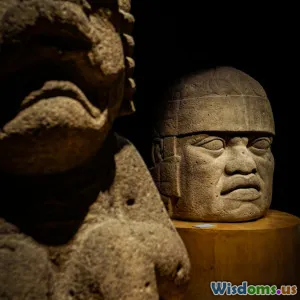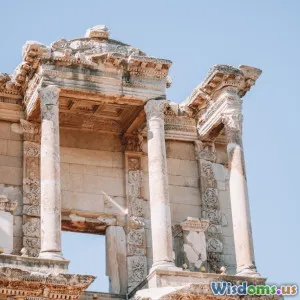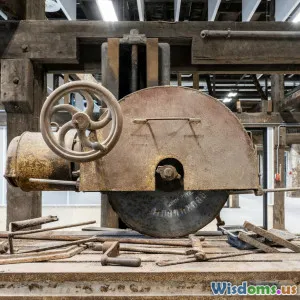
How to Spot Forged Artifacts in Ancient Tomb Discoveries
9 min read Learn expert strategies to detect forged artifacts in ancient tombs and uncover historical truths. (0 Reviews)
How to Spot Forged Artifacts in Ancient Tomb Discoveries
Introduction
The allure of uncovering ancient artifacts buried deep within tombs has fascinated archaeologists and historians for centuries. Each discovery holds the promise of unlocking mysteries of bygone civilizations, illuminating our understanding of the past. However, not all that glistens is genuine. Forgeries—meticulously crafted to deceive scholars and collectors—pose a significant threat to the integrity of archaeological research. Detecting forged artifacts is both an art and a science, requiring a holistic approach to differentiate authentic relics from counterfeits. This article delves into the compelling world of artifact detection, offering insights on how to spot forged ancient tomb objects through scientific methods, stylistic analysis, and historical context.
Understanding the Stakes: Why Detecting Forgeries Matters
Forged artifacts can distort historical narratives and jeopardize academic credibility. When fakes infiltrate both museums and private collections, they not only impair the study of ancient civilizations but can also fuel myths and misconceptions. For instance, the infamous "Piltdown Man" hoax in paleoanthropology misled scientists for decades, delaying real progress in human evolutionary studies.
In the realm of ancient tomb discoveries, forged relics can lead to false conclusions about burial customs, trade relations, and cultural achievements. Consequently, honing the ability to expose these fabrications is imperative for archaeologists, curators, and enthusiasts alike.
Scientific Techniques in Authentication
1. Radiocarbon Dating and Thermoluminescence
Dating methods are foundational in authentication. Radiocarbon dating is especially useful for organic materials (wood, textiles, bones), measuring the decay of carbon-14 isotopes to estimate age up to approximately 50,000 years.
For ceramic and fired objects, thermoluminescence helps determine the last time pottery was heated. If a piece purported to be from 3000 BCE shows a much more recent heating date, it raises immediate red flags.
Example: A supposedly ancient ceramic jar unearthed from an Egyptian tomb underwent thermoluminescence dating revealing it was crafted only in the 20th century, confirming it was a modern creation.
2. Materials Analysis: X-Ray Fluorescence (XRF) and Microscopy
XRF spectrometry can identify elemental composition without destroying the object. Authentic artifacts often have unique impurities or material sourcing consistent with known ancient mines or production centers.
Microscopic examination reveals wear patterns and tool marks invisible to the naked eye. For instance, modern tools may leave uniform cuts, unlike ancient handmade engravings which show irregularities.
Insight: When applied to metal weapons from ancient tombs, XRF can detect modern alloys inconsistent with historical metallurgy, pointing to forgery.
3. DNA and Residue Testing
Organic residues, such as embalming materials or pigments, may preserve DNA or chemical traces. These can be analyzed to evaluate if contents are ancient or recent.
In expeditions to Egyptian tombs, researchers have used residue analysis to confirm the composition of embalming balm consistent with known ancient recipes—fraudulent artifacts generally lack such chemical authenticity.
Stylistic and Contextual Examination
1. Iconography and Artistic Style
Each civilization had distinctive artistic conventions, symbolism, motifs, and craftsmanship methods. Experts closely compare discovered artifacts against a comprehensive corpus of known examples to spot anomalies.
Case Study: The "Etruscan Warriors" found in the early 20th century were initially celebrated until stylistic inconsistencies in posture and clothing compared to authenticated artifacts suggested they were modern fabrications.
2. Provenance and Excavation Records
Authenticity weighs heavily on thorough documentation. Genuine artifacts are usually documented with detailed excavation logs, photographs, stratigraphic data, and associated finds.
When provenance is unclear or nonexistent, the risk of forgery escalates. The art market’s black market sometimes floods with unprovenanced items to bypass rigorous verification.
Quote: Dr. Sarah Parcak, archaeologist and satellite imaging pioneer, emphasizes: "A well-documented excavation gives us a narrative context, essential for confirming authenticity. Without it, artifacts live in a vacuum of doubt."
3. Cultural and Historical Plausibility
Artifacts should fit within the known cultural and historical framework. Sudden anachronistic features or materials inconsistent with a civilization’s technological development often indicate forgery.
For example, the discovery of an iron object in a society believed to lack smelting technology during a certain era requires scrutiny—either periods require rethinking or the object is a modern intrusion.
Lessons from Famous Forgeries in Archaeological History
The Tomb of Tutankhamun’s ‘Golden Age’ Fakes
In the excitement surrounding Egypt’s boy king Tutankhamun’s tomb discovery (1922), some artifacts attributed to that era were later exposed as modern fabrications, crafted to elevate the tomb’s perceived grandeur. Subsequent scientific testing debunked several pieces previously acclaimed as genuine.
The James Ossuary Hoax
A limestone box inscribed with “James, son of Joseph, brother of Jesus” created intense debate over biblical archaeology. Though intriguing, experts flagged linguistic inconsistencies and suspicious patina, leading many to conclude the inscription was likely modern.
These historic cases underscore that could-be revolutionary finds warrant cautious, multidisciplinary scrutiny.
Practical Tips for Enthusiasts and Professionals
-
Insist on Multiple Authentication Methods: Relying on only historical or stylistic evaluation is insufficient. Combine scientific dating and analytical techniques with expert art historical consultation.
-
Study Material Composition: Learn to detect materials inconsistent with the supposed time, such as modern pigments or alloys.
-
Check Provenance Thoroughly: Ask for detailed excavation context and ownership history. Red flags include artifacts emerging without academic backing.
-
Stay Updated on Technological Advances: Techniques like 3D scanning, AI image analysis, and advanced spectroscopy refine detection capabilities.
-
Be Skeptical of Sensational Discoveries: Extraordinary claims demand extraordinary evidence. Engage skepticism alongside excitement.
Conclusion
Detecting forged artifacts in ancient tomb discoveries demands a fusion of science, art history, and rigorous documentation. As forgers become increasingly sophisticated, the responsibility to preserve our heritage becomes ever more critical for archaeologists, museums, and collectors. By adopting a multidisciplinary approach—embracing radiocarbon dating, material science, iconographic expertise, and provenance validation—experts can safeguard the fidelity of history.
The adventure of the archaeological quest remains thrilling, but integrity must underpin every discovery. Cultivating critical awareness transforms awe from naivety into enlightened appreciation of humanity’s shared ancient legacy.
By applying these comprehensive methods, we not only discern truth from trickery but honor the enduring stories carved by forebears across millennia.
Rate the Post
User Reviews
Popular Posts





















